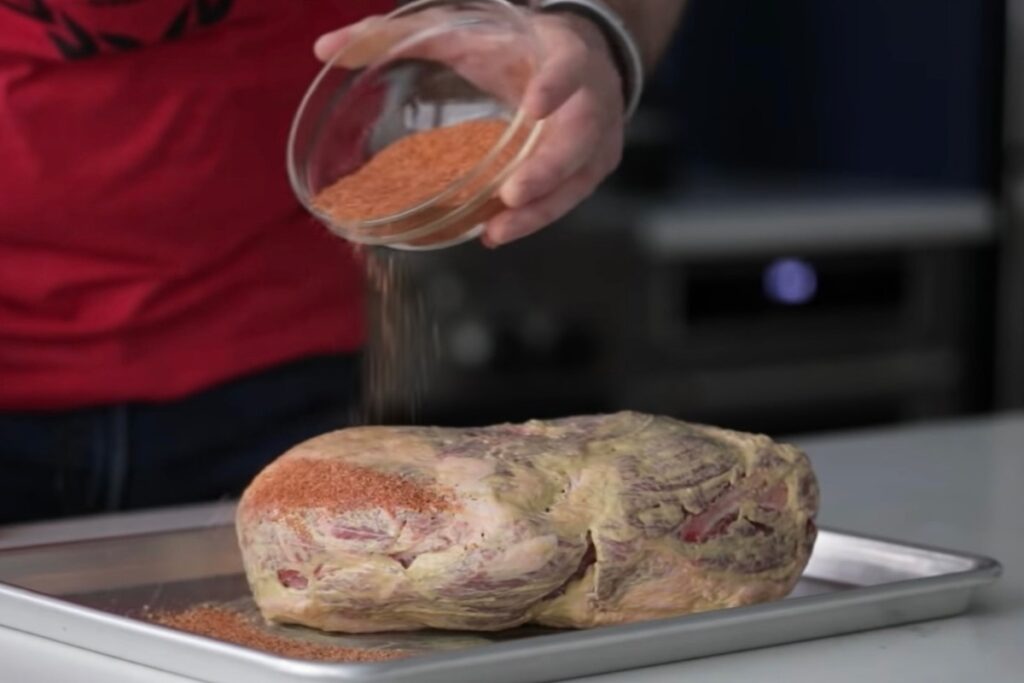We’ve all been a beginner at barbecuing at some point. Whether we’re comfortable admitting it or not, there was a point for all of us when we were new to this way of cooking. And being new to a new hobby or skill means that you’re going to run the risk of making a rookie mistake.
Whether that’s forgetting that something is on the grill once it is closed, or not understanding how to stack food that has been cooked away from the heat whilst not giving new food enough room to cook properly.

Of course, there’s nothing wrong with this. Getting better at anything, whether grilling or roasting, is as much about learning what didn’t work as much as it is what did. Still, that doesn’t mean that it isn’t frustrating to see a meal you’ve been planning and preparing for going up in cinders and smoke, just because you didn’t know better.
Case in point: Grilling a pork butt, and suffering the pork butt stall.
This has probably happened to most of us at least once in our barbecuing career. For whatever reason, no matter how hot you make your grill, or how often you check it, your pork butt just won’t cook right!
There has to be a way around this, right?
Well, that’s exactly what this guide is here for: to help you avoid the disappointment of a pork barbecue stall, we’re going to give you a rundown of what this frustrating phenomenon is, how it happens, what you can do to avoid it, as well as bust some myths surrounding this annoying quirk of cooking that have popped up over time.
Misinformation is almost as bad as no information, especially when it comes to food, so it always pays to help correct these ideas when possible.
So, with that out of the way, let’s get started!
(For the rest of this article, we will be using the terms ‘pork stall’ and ‘barbecue stall’ interchangeably, so don’t be too surprised if you hear both.)
What is a Pork/Barbecue Stall?
So, before we go any further into this guide, we should probably first explain what exactly a pork butt stall is.
Well, it’s exactly what it says on the tin: It is when a cooking piece of pork butt stalls in the cooking process. In other words, it refuses to continue cooking, typically because the temperature has dropped either through lack of heat to begin with, or simply low temperatures throughout the meat itself.
The result, of course, is a piece of meat that looks like it may taste great until you cut into it, only to find that it is still undercooked in terms of appearance or texture on the inside, or even still on the outside in some cases.
Or, if you are using a thermometer to check your meat, you find that the internal temperature is still well below the heat it needs to be at to start cooking properly, usually around 150 to 170 degrees Fahrenheit, even after hours of being left at a much higher temperature.
Pork butt is often considered the best when it comes to the cuts of pork meat that are best for pulled pork, and is the most frequent victim of this barbecuing issue, hence why it is sometimes called ‘pork butt stall’.
This is an extremely common issue, particularly among beginners who aren’t used to working with food that needs to be kept at a consistent temperature. If you think back to your first few attempts at cooking, chances are you’ll remember one specific moment where this issue arose whilst you were preparing your first pork butt or two for pulling.
So, the question many people have when they see their undercooked, is how exactly did this happen?
How and Why Does it Happen?
So, we have the ‘what’ when it comes to a pork butt barbecue stall is, now we need to ask the ‘why’ and the ‘how’ it happens, to best deal with it.
Well, the answer to this burning (unlike your pork butt) question might surprise you.
It’s all about water. Your meat is sweating itself to a standstill on your barbecue.
That might sound a little strange at first, but the science behind it is sound enough. In living human bodies, for example, sweat is a vital part of its cooling system that draws heat out of your body through droplets of water, which is an excellent conductor of heat, and helps the body maintain a relatively consistent temperature, as heat is drawn away as water that is carrying that heat leaves the system.
Of course, this isn’t the exact cause for your pork butt. Living pigs don’t even sweat, much less a piece of meat from a dead one! So how can it be sweating?
Well, it is still the same principle. Whilst it may not be sweat, there is still plenty of moisture and water to be found in a tender and juicy piece of pork. As the pork heats up on the grill of your barbecue, the moisture that is still inside it will leave the piece of meat that you are cooking, sapping your pork of the heat that it needs to help safely cook it through.
The scientific term for this happening is what is known as ‘Evaporative Cooling’.
How Long Does it Last?
So, the next question you may have after learning about the effects of what exactly happens in a barbecue stall on your pork. The next thing many people will wonder after this is, ‘How long does this last?’
Well, the answer to that question is… it depends.
That is a frustrating answer to hear when you are cooking, but when calculating how long a barbecue stall will be, so many factors have to be taken into account. The size of the pork butt being cooked. Whether it is wrapped, and what material is being used to wrap it.
The size of the barbecue and the grill, the heat that it is being cooked at. All of these factors make it difficult to say for sure how long this stall will last for your food, which is one of the main problems with it in the first place!
Briskets take anywhere from 3 to 4 hours to cook, sometimes longer, even without stalling taking up most of your time. Stall time can be anywhere from a single hour, all the way up to 7 hours!
The stall moves from the outer surface to the inner core, as moisture is drawn from the outer layers of the pork, and moisture from deeper within is drawn further out. The stall continues until there is enough water evaporation that it cannot balance the heat production anymore. Then the temperature will start to rise again.
The length of your stall is difficult to predict because it depends on many factors. The bigger the piece of meat, the more water it contains, and the longer it can stay in the pit. The surface area of meat also affects how long it stays in the pit. Pellet smokers may include fans inside them, which can help speed up the process.
All this is to say, is that there is very little way of definitely saying how long a pork butt stall will last. This is why it is all the more important that you should take measures to counter it.
How to Avoid the Barbecue Stall?

So, now that we have established the issues that a barbecue stall can bring with it, it is time to discuss some steps you can take to help reduce that stalling time, if not cutting it out entirely.
A Good Cooking Thermometer
First things first, if you want to be able to track the heat inside your pork butt without cutting it open, you need to be able to track it well. Investing in a good cooking thermometer will make checking your pork to see if it is staling much easier for yourself.
Using a Pellet Smoker
In terms of the best equipment to cook pork butt in, a good pellet smoker creates the ideal environment to let warm and moist air escape your grill, just what you need when you’re trying to get the moisture out of a pork butt for cooking.
Electric Smokers will also work well enough, but they also tend to have a well-sealed cooking system, making it difficult for moisture to get out.
Just make sure that the pellet smoker that you are using does not have a water pan. Water pans allow the water to mix with the smoke on the surface of the meats, increasing the smoky flavors. However, they also add to the moisture on top of the meat, slowing down the cooking time.
Since the pork will only start to cook once you have removed all the moisture from the cooking system, it would be wise to keep any moisture out, unless you feel like waiting for a few extra hours!
Cutting Down on Basting/Sauces
On the subject of keeping moisture out of your cooking system, you might also want to reduce or completely cut out sauces or baste your pork until after the cooking is finished. Whilst all those extra flavors might help your pork taste great, it also adds a ton of moisture to the cooking, which will add a lot of time to the stalling process.
If you want to add any sauces to your pulled pork, you should wait until cooking is finished, that way, the dryer pork will not only cook quicker but will absorb more sauce or baste afterward too!
Raising the Temperature
Of course, you do always have the option of simply turning up the heat of whatever it is you are cooking your pork butt in. Raising the temperature to about 300 degrees Fahrenheit or above will dramatically reduce the cooking time for your pork butt, or even eliminate it!
Be careful with this method, however, and keep a watchful eye on your pork whilst the heat is this high. Once all the moisture has left the pork butt, the temperature will quickly start to rise, which runs the danger of burning your meat before you even realize what is happening!
Conclusion
So, with all this information put together, hopefully, you will be able to deal with pork butt run if it comes up during your cookouts. We hope that this guide helped you learn how to avoid runny pork butt, which is something we were all at one point!
Thanks again for reading our article today!
- Porterhouse Vs. Ribeye - May 16, 2022
- How Long To Smoke A Brisket Per Pound – Explained - May 16, 2022
- What Is A Tomahawk Steak? - May 16, 2022








